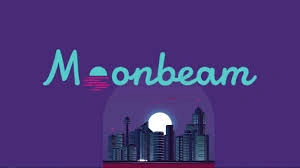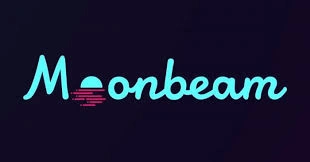Moonbeam GLMR: Fueling Multichain DApps on Moonbeam Network
Table of Contents

If you’re following the evolution of Web3, one project that deserves your attention is Moonbeam. Built as a parachain on the Polkadot network, GLMR offers full Ethereum compatibility combined with multichain connectivity and low fees. With an average block time of around ~5 seconds and transaction costs of just ~$0.02, it’s optimized for adoption. Its native token GLMR is at the heart of the system — used for fees, staking, governance, and securing the network. In this article, we’ll break down what GLMR really is, why GLMR matters, its tokenomics, ecosystem use-cases, how to get started, and what’s next for this multichain layer-1. Let’s dive into how GLMR could shape the future of cross-chain dApps.
For more insights and updates on the latest trends in cryptocurrency, be sure to check out our Nifty Finances platform, which serves as your gateway to smarter financial decisions in the digital economy.

What Is Moonbeam Network?
Moonbeam is an EVM-compatible smart contract parachain built on the Polkadot network, designed to make it easy for developers to deploy existing Ethereum-based applications in a multi-chain environment. In essence, GLMR bridges the best of both ecosystems: Ethereum’s developer familiarity and tooling combined with Polkadot’s scalable, interoperable infrastructure. This unique combination allows developers to extend their reach beyond Ethereum while leveraging the benefits of Polkadot’s shared security and cross-chain communication capabilities.
Bridging Ethereum and Polkadot Seamlessly
At its core, Moonbeam solves one of the most significant challenges in Web3 today — blockchain fragmentation. While Ethereum remains the most widely used smart contract platform, scalability issues and high fees have limited its accessibility. Meanwhile, Polkadot offers an ecosystem of interoperable parachains, each serving different functions but often requiring specialized development tools. GLMR acts as the compatibility layer that unites these two worlds.
Developers can easily redeploy existing Solidity-based smart contracts on GLMR without rewriting code. This means that Ethereum dApps — such as decentralized exchanges, NFT marketplaces, and lending platforms — can seamlessly expand into the Polkadot ecosystem. By doing so, they gain access to Polkadot’s network effects, lower fees, and advanced interoperability, all while maintaining their Ethereum-native tools and integrations.
The Value Proposition: Ease, Efficiency & Interoperability
Moonbeam stands out for its developer-friendly environment and cross-chain capabilities. Unlike traditional Layer-1 blockchains that require developers to learn new languages or architectures, GLMR mirrors Ethereum’s technology stack, making migration straightforward.
- EVM Compatibility: Developers can use familiar tools like MetaMask, Hardhat, Truffle, and Remix to interact with Moonbeam’s network.
- Cross-Chain Connectivity: Through Polkadot’s XCM (Cross-Consensus Messaging) protocol, Moonbeam enables asset and data transfers across parachains, opening new composable use cases.
- Shared Security: As a Polkadot parachain, GLMR inherits Polkadot’s relay chain security, ensuring robust and decentralized protection against attacks.
- Low Fees & Fast Blocks: With an average block time of about 5 seconds and transaction fees around $0.02, GLMR provides a smooth user experience suitable for DeFi, NFTs, and other Web3 applications.
This combination of interoperability and cost efficiency positions Moonbeam as a gateway to multichain deployment, where Ethereum dApps can reach new users across Polkadot’s growing network.
Tackling Blockchain Fragmentation
The Web3 landscape remains fragmented, with isolated ecosystems competing for liquidity, users, and developer attention. Moonbeam’s mission is to eliminate this fragmentation by offering a unifying layer where developers and users can interact across multiple blockchains seamlessly.
By being EVM-compatible and Polkadot-native, GLMR provides an environment where assets, contracts, and messages can flow freely between networks. This enables new forms of dApps that are not tied to one chain but operate interoperably across many — a major step toward a truly connected Web3.
Moonbeam represents a critical milestone in the evolution of decentralized ecosystems. It empowers developers to build once and deploy everywhere, users to enjoy faster and cheaper transactions, and the Polkadot ecosystem to thrive with more dApps and liquidity.
As Web3 continues to move toward a multi-chain reality, Moonbeam’s role as a compatibility and interoperability hub becomes increasingly vital. By combining Ethereum’s flexibility with Polkadot’s scalability and security, GLMR isn’t just another blockchain — it’s the connective tissue enabling the next phase of decentralized innovation.

Core Features & Technical Architecture of Moonbeam
Moonbeam is more than just a smart contract platform — it’s a bridge between ecosystems, uniting Ethereum’s massive developer base with Polkadot’s scalable, interoperable infrastructure. Built on Substrate, the same framework that powers Polkadot, GLMR combines Ethereum compatibility with advanced cross-chain functionality. Its technical architecture is designed to make decentralized applications (dApps), gaming platforms, and real-world assets (RWA) projects not only deployable but scalable and efficient across multiple chains.
EVM Compatibility: Seamless Transition for Ethereum Developers
One of Moonbeam’s most defining features is its full Ethereum Virtual Machine (EVM) compatibility. This makes it one of the easiest environments for developers to transition existing projects from Ethereum without the need for rewriting or re-architecting code.
- Plug-and-Play Tooling: Developers can continue using familiar tools such as MetaMask, Hardhat, Truffle, and Remix, ensuring a low learning curve.
- Solidity Support: Since GLMR runs the same EVM bytecode, smart contracts written in Solidity can be deployed directly.
- Ethereum-Style Accounts & Transactions: Users can interact using their Ethereum wallets and addresses, creating a familiar experience for both developers and end users.
This compatibility not only reduces development friction but also helps accelerate multichain expansion, enabling dApps to extend into the Polkadot ecosystem effortlessly.
Cross-Chain Messaging & Interoperability
A cornerstone of Moonbeam’s architecture is its cross-chain interoperability. Through Polkadot’s Cross-Consensus Messaging (XCM) and integration with bridging protocols, Moonbeam allows assets, data, and contract calls to move freely between chains.
- XCM Protocol Integration: Enables communication between Polkadot parachains — allowing dApps on Moonbeam to tap into liquidity, data feeds, and assets across the Polkadot network.
- External Bridges: Moonbeam also supports bridges to other major blockchains like Ethereum, Avalanche, and Binance Smart Chain, expanding its interoperability beyond Polkadot.
- Interchain Applications: Developers can build apps that operate simultaneously across multiple chains, such as lending protocols using collateral from one chain while executing logic on another.
This interconnected design empowers builders to create dynamic, composable DeFi ecosystems and interoperable Web3 solutions — the foundation of the emerging multichain future.
Developer-Friendly Infrastructure
Moonbeam’s Substrate-based architecture is modular and flexible, designed to handle high transaction throughput while keeping costs low. It offers several technical advantages that make it an optimal platform for scalable applications:
- High Performance: An average 5-second block time ensures fast transaction confirmations, critical for DeFi and gaming applications.
- Low Gas Fees: With costs around $0.02 per transaction, developers and users can interact without the burden of high gas expenses.
- Scalability and Reliability: Built to leverage Polkadot’s shared security and parachain model, Moonbeam achieves scalability without compromising decentralization.
This infrastructure provides a robust foundation for both established Web3 projects and new teams entering the ecosystem.
Use Cases in Action
Moonbeam’s growing ecosystem showcases its versatility across sectors:
- DeFi: Protocols such as StellaSwap and Beamswap leverage Moonbeam’s low fees and fast execution for liquidity provision and yield farming.
- Gaming: Blockchain games use Moonbeam’s scalable infrastructure to handle large transaction volumes without bottlenecks.
- Real-World Assets (RWAs): Projects tokenizing physical assets like real estate or commodities can benefit from Moonbeam’s interoperability and low-cost transactions.
Through these applications, Moonbeam proves its ability to serve as a multi-purpose layer for DeFi, gaming, and RWA ecosystems, powering the next generation of cross-chain innovation.
Moonbeam’s architecture combines Ethereum familiarity, Polkadot interoperability, and Substrate scalability — creating a platform where developers can build once and deploy everywhere. This makes it not only a technical bridge but a strategic enabler of Web3’s multichain future.

Tokenomics & Utility of GLMR Token
The GLMR token lies at the heart of the Moonbeam Network, serving as the fuel that powers this Ethereum-compatible smart contract platform built on Polkadot. As a utility and governance token, GLMR enables users, developers, and validators to participate in every layer of the network’s operation—ensuring security, decentralization, and sustainability.
Core Utilities of GLMR
The GLMR token serves three primary purposes: transaction fees, staking, and governance.
- Transaction Fees – GLMR functions as “gas” for all activities on the Moonbeam Network. Every contract deployment, transfer, or smart contract interaction requires GLMR for execution—similar to how ETH fuels the Ethereum network. With Moonbeam’s low fees (often averaging around $0.02 per transaction), users benefit from fast and affordable operations without compromising decentralization.
- Staking & Network Security – Moonbeam uses a delegated proof-of-stake (DPoS) mechanism, where GLMR holders can stake their tokens to support collators—nodes that produce blocks and maintain network integrity. In return, stakers earn rewards, incentivizing participation and ensuring robust network security. This staking mechanism also democratizes participation, allowing anyone to back trusted collators without running complex infrastructure.
- Governance & Decentralized Decision-Making – GLMR empowers token holders to shape the protocol’s future. Holders can propose or vote on upgrades, funding initiatives, and protocol changes via on-chain governance. This ensures Moonbeam’s evolution remains community-driven, fostering transparency and inclusivity.
Supply, Distribution & Incentives
Moonbeam’s native token, GLMR, has a total supply of 1 billion tokens, with an initial inflation rate of approximately 5% annually. The inflation primarily serves to reward collators and delegators participating in staking.
Distribution of GLMR initially included allocations for the founding team, community incentives, investors, and the foundation’s ecosystem development fund. Over time, network growth and governance decisions have continued to refine token distribution to maintain decentralization and healthy liquidity.
Staking plays a major role in circulating supply dynamics—tokens locked for staking help reduce liquid supply while rewarding active participants. This design creates a balanced ecosystem where long-term holders benefit from both token appreciation potential and consistent staking yields.
Alignment of Token Utility with Network Growth
GLMR’s utility is deeply tied to Moonbeam’s mission of bridging the gap between the Ethereum and Polkadot ecosystems. As more developers deploy dApps on Moonbeam, demand for GLMR increases because each transaction, contract deployment, and cross-chain operation consumes GLMR.
In addition, staking participation ensures that the network remains secure and scalable as activity grows. Governance participation allows the community to guide the network’s evolution, aligning token utility with decentralized growth.
GLMR’s tokenomics include inflationary rewards and unlock schedules that gradually release tokens over time to contributors and the ecosystem. While this ensures sustainability and incentivizes long-term engagement, holders should remain aware of the supply dynamics and governance updates that may influence token value.
As Moonbeam continues expanding across Polkadot and beyond, GLMR remains the backbone of the network—driving transactions, governance, and staking in a scalable, interoperable Web3 environment.
Ecosystem Use Cases & Applications
The Moonbeam Network is rapidly growing into a versatile ecosystem within the Polkadot framework. By combining EVM compatibility, low transaction fees, and cross-chain interoperability, Moonbeam enables developers and users to build and interact with decentralized applications across multiple domains, including DeFi, gaming, NFTs, and Real-World Assets (RWAs).
DeFi on Moonbeam
Moonbeam provides a robust infrastructure for decentralized finance applications that want the familiarity of Ethereum but the scalability and cross-chain potential of Polkadot. Developers can migrate Ethereum smart contracts with minimal changes, allowing projects to reach new users while reducing development friction.
Key benefits for DeFi on Moonbeam include:
- Low-cost transactions: Average fees around $0.02 make frequent operations affordable.
- Cross-chain liquidity: Assets can move seamlessly between Ethereum, BNB Chain, and other networks via bridges.
- Composability: Developers can combine multiple DeFi protocols to create complex financial products.
These features empower users to access deeper liquidity, faster transaction settlements, and more diverse asset exposure within one multichain ecosystem.
Gaming and NFTs
Moonbeam’s infrastructure is equally suitable for blockchain gaming and NFTs. Its fast block times (~5 seconds) and low fees enable microtransactions, NFT minting, and in-game asset transfers without compromising user experience.
- Developer-friendly tooling: Standard Ethereum tools like Hardhat, Truffle, and MetaMask are supported.
- Cross-chain NFT interoperability: Assets can move between Moonbeam and other chains, enhancing liquidity and player engagement.
- Support for in-game economies: Developers can integrate tokenized assets and smart contracts for dynamic game mechanics.
These capabilities help developers create engaging and scalable gaming ecosystems while giving users a smooth, low-cost experience.
Real-World Assets (RWAs)
Moonbeam also bridges traditional finance and blockchain through the tokenization of real-world assets. By bringing assets like real estate, commodities, and bonds onto the blockchain, Moonbeam allows them to be traded, staked, or integrated into DeFi applications.
- Cross-chain asset management: Assets can interact with multiple chains, improving liquidity and usability.
- Yield-bearing tokenization: Investors can earn yield on tokenized real-world assets through staking or DeFi protocols.
- Transparency and compliance: Smart contracts enable verifiable ownership and secure transactions.
This opens new possibilities for institutions and retail users to participate in previously inaccessible markets.
Moonbeam’s ecosystem is a strong example of multichain interoperability in action. By enabling Ethereum-based dApps to operate across Polkadot and other networks, Moonbeam addresses blockchain fragmentation while expanding opportunities for developers and users alike. Its combination of performance, compatibility, and cross-chain connectivity positions it as a hub for next-generation Web3 applications.
How to Get Started with Moonbeam & GLMR
Getting started on the Moonbeam Network involves both understanding the utility of its native token, GLMR, and setting up the right tools to interact with the ecosystem. Moonbeam’s EVM compatibility makes it familiar for Ethereum developers, while its Polkadot integration adds scalability, cross-chain functionality, and shared security. Whether you are a user seeking to stake GLMR or a developer planning to deploy dApps, the process is structured yet accessible.
Acquiring GLMR and Setting Up a Wallet
To participate in Moonbeam, the first step is acquiring GLMR. GLMR is available on major cryptocurrency exchanges, often paired with stablecoins like USDT or USDC. Once purchased, you need a compatible wallet to interact with the network.
- MetaMask Integration: Users can configure MetaMask by adding Moonbeam’s network details (RPC endpoint, chain ID, and symbol). This enables direct interaction with dApps and staking platforms.
- Other Wallet Options: Wallets that support Ethereum-compatible networks, such as Ledger, Talisman, or MathWallet, can also be used.
It is crucial to verify contract addresses and network settings carefully to avoid loss of funds. Using official Moonbeam documentation ensures accurate configuration and safer transactions.
Staking GLMR
Moonbeam employs a delegated proof-of-stake (DPoS) mechanism where GLMR holders can participate in securing the network. Users can stake GLMR either as a collator or as a nominator:
- Becoming a Collator: Collators run nodes that produce blocks and maintain the network. This requires technical setup, including running a server with Moonbeam client software, and staking a minimum amount of GLMR. Collators earn rewards proportional to their stake and block production.
- Nominating (Delegating) GLMR: Users without infrastructure can stake their GLMR by delegating to trusted collators. This allows participation in network security while earning a share of staking rewards.
Staking aligns user incentives with network health, encouraging long-term engagement and security participation.
Best Practices for Users
To safely interact with Moonbeam, users should follow several guidelines:
- Security First: Use hardware wallets when possible, enable two-factor authentication on exchanges, and double-check network configurations.
- Understand Risks: Be aware of staking lock periods, token unlock schedules, and potential network or smart contract risks.
- Monitor Ecosystem Updates: Follow Moonbeam’s official channels for announcements on protocol upgrades, new bridges, or governance changes.
These precautions help users maximize security and participation benefits while minimizing exposure to network or operational risks.
Deploying Ethereum dApps on Moonbeam
For developers, Moonbeam provides a seamless migration path for Ethereum-based dApps:
- Connect to Moonbeam RPC: Configure development environments to point to Moonbeam nodes for deployment and testing.
- Deploy Solidity Contracts: Existing smart contracts can be redeployed with minimal adjustments due to EVM compatibility.
- Leverage Polkadot Parachain Features: Cross-chain messaging, asset bridging, and shared security enable developers to build scalable, interoperable dApps that interact across multiple chains.
By combining Ethereum familiarity with Polkadot’s multichain infrastructure, developers can create applications that are faster, cheaper, and interoperable, reaching a broader user base than on Ethereum alone.
Moonbeam’s approach simplifies both user participation and developer onboarding, making it an accessible platform for staking, transacting, and building multichain dApps with GLMR at its core. By following these steps and best practices, participants can fully leverage the network’s capabilities while maintaining security and efficiency.
Moonbeam Network and its GLMR token deliver a compelling package for the next-gen Web3 era — combining Ethereum compatibility with Polkadot-based parachain architecture, low transaction costs, fast block times, and robust cross-chain interoperability. Whether you’re a dApp developer looking to move seamlessly from Ethereum or a crypto investor exploring token utility and staking opportunities, Moonbeam offers multiple entry points.
That being said, as with any blockchain project, it’s important to consider the risks — from multichain bridge vulnerabilities to tokenomics and ecosystem competition. If you’re ready to engage with the multichain future rather than stay on a single chain, now is a good time to explore Moonbeam. Dive into the documentation, evaluate staking GLMR or building your next dApp on Moonbeam, and decide how this infrastructure layer fits into your crypto strategy. Explore c8ntinuum, a Multichain Interoperability.